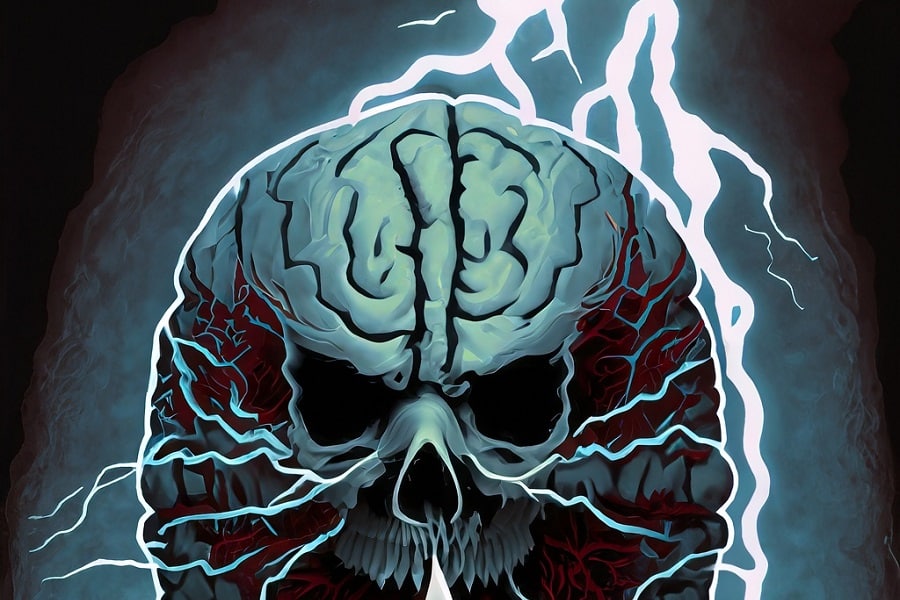
Fear in Suspense
If you’ve ever found yourself clutching a blanket, utterly engrossed in a spine-tingling suspense novel, you know the gripping power of fear. From the ghostly apparitions of Edgar Allan Poe to the relentless killers of Stephen King, suspense fiction is a genre that plunges readers into a world of terrors, real and imagined, all from the comfort (or discomfort) of our reading nooks. But what exactly is it that sends that chill down our spines, makes our pulses race, and our palms sweat? Welcome, dear reader, to the intricate labyrinth of the psychology of fear in suspense fiction.
The very essence of suspense is the delicious yet daunting anticipation of fear. It’s the uncanny echo in the silence of a haunted mansion, the glimmer of a knife in moonlight, the shadow behind the shower curtain. It’s not merely about what’s happening, but what might happen. Your imagination runs wild, and suspense fiction authors are the crafty puppeteers of this wild ride.
Alfred Hitchcock, the illustrious master of suspense, once made an eloquent distinction between surprise and suspense: surprise, he said, is a bomb going off without warning. Suspense, on the other hand, is knowing the bomb is under the table and wondering when it will explode. In suspense fiction, the audience is continually enticed by this sense of foreboding, a fear of the uncertain yet inevitable catastrophe. The fear of anticipation, thus, becomes the driving force behind the narrative.
Fear, as an emotion, has deep evolutionary roots. The amygdala, a small, almond-shaped bundle of nerves in our brain, plays a significant role in processing fear. It’s our own personal alarm system, priming us for danger. In suspense fiction, authors skillfully hack into this primitive response system, manipulating our fears and pulling us into their worlds.
A quintessential component of suspense and fear is empathy. In suspense fiction, we are not merely passive spectators but active participants in the narrative. We get inside the heads of the characters, feel their dread, their confusion, their desperation. We put ourselves in their shoes and imagine facing the lurking monsters, both literal and metaphorical, that they encounter. This vicarious experience of fear heightens our emotional response, making the story more impactful.
But it’s not only about empathy. It’s also about a phenomenon known as emotional contagion – the tendency for emotions to spread from one person to another. Ever found yourself starting to feel anxious just because a character in your favorite book was feeling the same? That’s emotional contagion in action. We ‘catch’ the fear of characters in suspense fiction, which in turn amplifies our own sense of anxiety and dread.
However, fear isn’t a one-size-fits-all phenomenon. Just as our phobias vary wildly, from fear of spiders to fear of heights, so too does the fear that suspense fiction taps into. Some authors exploit universal fears, such as death or the unknown. Others may delve into more specific anxieties, such as claustrophobia or a fear of the dark. The ability of a story to scare you often depends on how well it aligns with your personal palette of fears.
But why, you may ask, do we willingly expose ourselves to these sources of fear? One theory proposes that it’s because of the thrill of the ‘safe scare.’ When we read suspense fiction, we experience fear in a controlled environment. Our amygdala may be firing on all cylinders, but deep down, we know we’re safe. The monster can’t really get us, the serial killer can’t really harm us. This balance allows us to experience the thrill of fear without actual danger. This juxtaposition of thrill and safety transforms the reading of suspense fiction into a sort of emotional roller coaster, where we can enjoy the rush without the risk.
Another factor that explains our morbid fascination with suspense fiction is catharsis, a concept borrowed from ancient Greek tragedy. By immersing ourselves in the horrifying world of suspense fiction, we experience intense emotions of fear and dread, which can ultimately lead to a sense of relief or purification. It’s like a psychological pressure valve that allows us to release our pent-up anxieties and fears.
Moreover, suspense fiction often puts us face to face with our worst nightmares, forcing us to confront them. It brings our deepest fears out into the open, and by doing so, it can paradoxically make them seem less terrifying. It can serve as a form of exposure therapy, helping us to better cope with our fears.
Finally, let’s not forget the allure of the unknown, the mysterious, and the supernatural. These elements stimulate our curiosity, drawing us into the enigmatic universe of suspense fiction. They make us question the world around us, blurring the lines between reality and fantasy, rational and irrational, familiar and unfamiliar.
The psychology of fear in suspense fiction is a multifaceted phenomenon. Authors weave a complex web of anticipation, empathy, emotional contagion, and personal fears to create stories that unsettle and thrill us. We, as readers, engage with these tales not just for the ‘safe scare’ they provide, but also for the cathartic release, the confrontation with our fears, and the exploration of the unknown they offer. Understanding this dance of dread and delight deepens our appreciation for suspense fiction, transforming every turn of the page into a riveting journey into the shadowy corridors of our own minds.
More Suspense Features
Is It Suspense?
How you know a suspense story for what it is
Unreliable Narrators in Suspense
The most enthralling mysteries are those that lie within us
Suspense Themes
What are some of the common themes of suspense?



